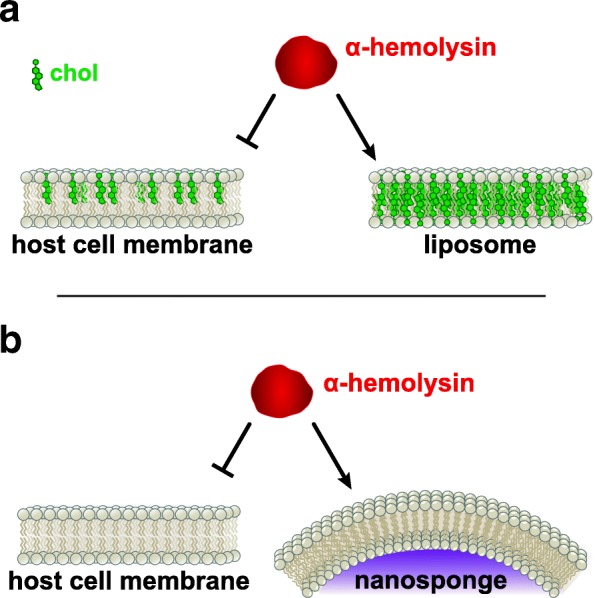Fig. 3.

Membrane-based inhibitors. a Many toxins, including S. aureus α-hemolysin, bind preferentially to cholesterol-containing membranes. A liposome with an unnaturally high cholesterol composition was demonstrated to absorb α-hemolysin, preventing its interaction with host cells. b A nanosponge was created in which a red blood cell membrane was fused to a PLGA nanoparticle core. This particle was more effective in inhibiting α-hemolysin from interacting with host cells than either liposomes or red blood cell membrane vesicles not fused to the polymer core
